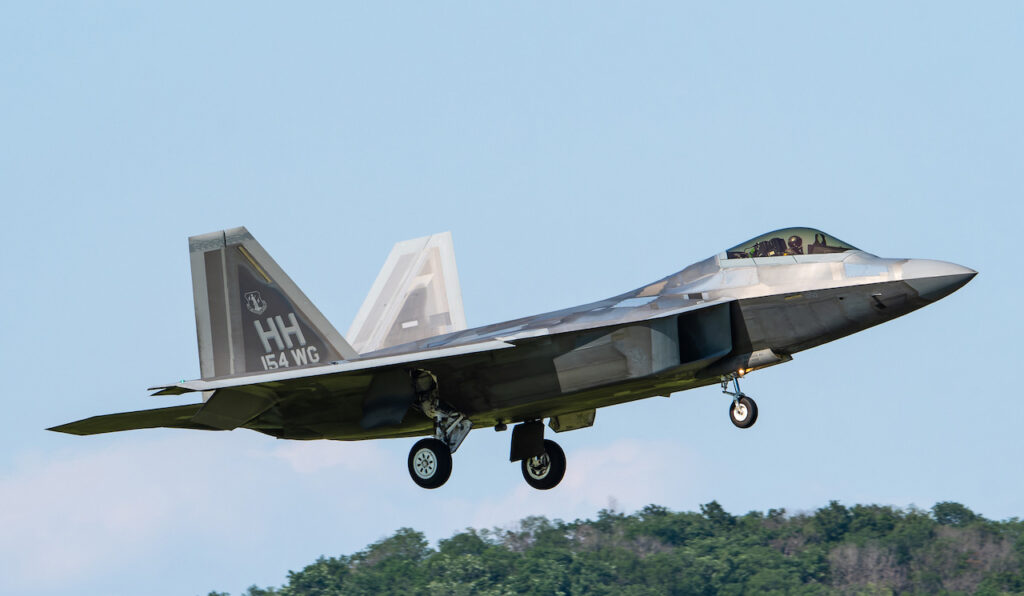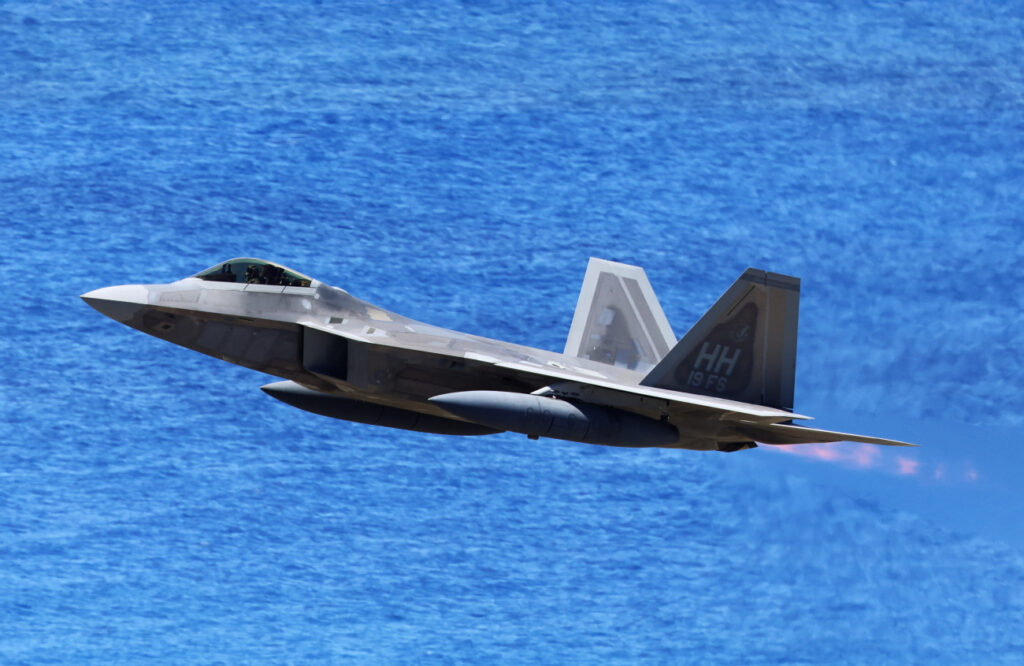
The F-22 Raptor isn’t just a stealth fighter. Explore five surprising and technical ways it’s been used in unconventional military operations.
The Unknown Roles of the F-22 Raptor: Beyond Air Superiority
Designed to dominate the skies in air-to-air combat, the Lockheed Martin F-22 Raptor is a fifth-generation stealth fighter built primarily to ensure American air superiority. With its supercruise capability, extreme maneuverability, and radar stealth, it is widely considered one of the most advanced air combat platforms ever developed. However, beyond its traditional role in high-altitude dogfights and air interdiction, the F-22 has been employed in a number of unconventional missions. This article explores five lesser-known and technically complex uses of the Raptor that demonstrate its true versatility — despite its often rigid doctrinal employment.

A Tool of Strategic Deterrence in Power Projection Missions
One of the least publicized but highly effective uses of the F-22 is as a strategic deterrent through show-of-force deployments. The U.S. Air Force regularly dispatches Raptors to sensitive regions such as the Korean Peninsula, the Persian Gulf, or Eastern Europe — not to engage, but to intimidate and dissuade.
The sudden appearance of F-22s in international airspace, supported by tanker aircraft, acts as a powerful signal: the U.S. can project stealth airpower rapidly and unpredictably. In March 2022, F-22s were deployed to Poland in response to Russia’s invasion of Ukraine. The psychological effect of a low-observable aircraft operating close to hostile borders served both to reassure allies and to silently warn adversaries.
Technically, these deployments require a high level of logistical coordination. F-22s need dedicated ground support infrastructure to maintain their stealth coatings, secure shelters, and specialized cooling and electronics systems. These missions often stretch the global sustainment chain of a platform not originally designed for rapid expeditionary use.
A Historic Interception of a High-Altitude Surveillance Balloon
In February 2023, an F-22 became the first aircraft in history to shoot down a high-altitude surveillance balloon, when it intercepted a suspected Chinese spy balloon off the coast of South Carolina. The engagement used an AIM-9X Sidewinder missile fired from roughly 60,000 feet (18,300 meters) — an unusual altitude for a missile launch.
The balloon, non-maneuvering and slow-moving, was far from the Raptor’s typical adversaries. Yet the F-22 was selected for this mission due to its ability to quickly reach high altitude and maintain precise control at those heights. Its AN/APG-77 AESA radar enabled effective tracking and targeting of a low-signature, non-traditional threat.
This mission illustrated how the Raptor can be adapted for non-kinetic, symbolic, or low-intensity security tasks outside of combat operations — including airspace sovereignty enforcement and strategic signaling.
A Testbed for Artificial Intelligence and Sensor Fusion
Although the F-22 was developed in the 1990s, selected aircraft have been integrated into experimental programs involving artificial intelligence, autonomous systems, and next-gen sensor fusion. Despite its closed software architecture, the F-22 has been used to test how emerging technologies could improve target detection, prioritization, and combat autonomy.
These programs explore how a fighter’s radar, infrared sensors, radar warning receivers (RWR), and datalinks can be integrated into a combat cloud environment, where AI systems assist the pilot in threat analysis, decision-making, or even in issuing fire commands.
In this role, the Raptor acts as a proving platform for technologies relevant to the future Next Generation Air Dominance (NGAD) program, including manned-unmanned teaming with autonomous drones and human-machine interface design under combat stress.
A Stealth Scout in Multi-Generation Strike Packages
The F-22 is often deployed in a less visible but tactically crucial role: that of a stealth forward sensor and target designator for legacy fighters such as the F-15C, F-16C, and allied platforms. Thanks to its radar and passive detection systems, the F-22 can silently approach contested areas, identify threats, and transmit targeting data back to less survivable aircraft.
In this way, the Raptor acts as a stealth reconnaissance and targeting platform, extending the engagement range of fourth-generation aircraft without exposing them to enemy air defenses. This tactic is particularly useful in suppressing enemy air defenses (SEAD) or initiating long-range strikes.
However, the Raptor uses a proprietary Intra-Flight Data Link (IFDL) that is incompatible with the NATO-standard Link 16. To bridge this gap, U.S. forces rely on intermediary platforms like the E-3 Sentry AWACS or KC-46 Pegasus tankers equipped with gateway systems that translate and relay data.

A High-Performance Interceptor in Arctic and Harsh Weather Environments
F-22s based in Alaska and Northern Canada serve a key role in protecting North American airspace under NORAD (North American Aerospace Defense Command). In these regions, Raptors regularly perform interceptions of Russian aircraft, including Tu-95 bombers and Il-20 surveillance planes, in the Alaska Air Defense Identification Zone (ADIZ).
These missions subject the aircraft to extreme cold, wind shear, icing conditions, and degraded GPS environments. Ground crews and pilots must adapt to temperatures below -30 °C (-22 °F), requiring thermal protection of avionics and radar systems, as well as enhanced de-icing protocols.
Although far from a typical combat environment, these high-readiness alert missions test the F-22’s ability to function reliably in low-infrastructure and harsh climates, maintaining readiness to intercept high-value targets within minutes of detection.
Hidden Versatility Beneath a Narrow Doctrine
Although constrained by high operational costs, limited fleet size, and closed software systems, the F-22 Raptor has demonstrated a remarkable ability to adapt to mission sets beyond its original design. From strategic messaging and non-traditional intercepts to technology experimentation and cold-weather defense, the F-22 continues to serve as more than just an air superiority platform.
These unusual uses show that an aircraft’s real value lies not only in the weapons it carries, but in the range of strategic possibilities it enables — often beyond the radar of public perception.
War Wings Daily is an independant magazine.